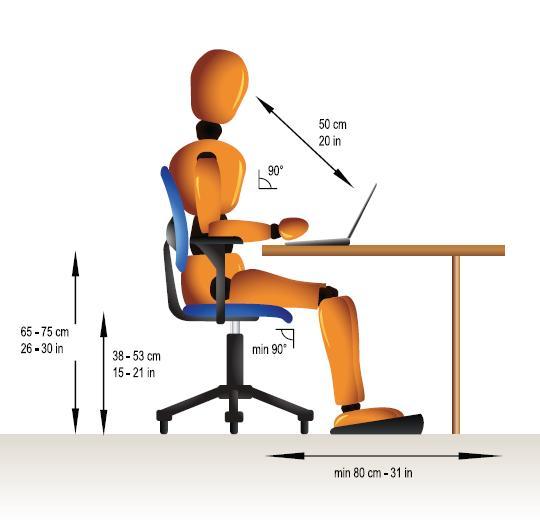Workplace Ergonomics
September 13, 2018
You may have heard of references to ergonomic workstations around the office without much thought of what that really means. The term “ergonomics” refers to the design and efficiency of people’s working environment.
The goal of ergonomics is to prevent soft tissue injuries and musculature disorders (MSDs) caused by sudden or sustained exposure to force, vibration, repetitive motion, and awkward posture.
Musculoskeletal disorders (MSDs) affect the muscles, nerves, blood vessels, ligaments and tendons. Workers in many different industries and occupations can be exposed to risk factors at work, such as lifting heavy items, bending, reaching overhead, pushing and pulling heavy loads, working in awkward body postures and performing the same or similar tasks repetitively.
By looking critically at your workplace operations, you can identify risk factors and eliminate or control them as early as possible.
Risk Factors
The risk of MSD injury depends on work positions and postures, how often the task is performed, the level of required effort and how long the task lasts.
Risk factors that may lead to the development of MSDs include:
- Exerting excessive force. Examples include lifting heavy objects or people, pushing or pulling heavy loads, manually pouring materials, or maintaining control of equipment or tools.
- Performing the same or similar tasks repetitively. Performing the same motion or series of motions continually or frequently for an extended period of time.
- Working in awkward postures or being in the same posture for long periods of time. Using positions that place stress on the body, such as prolonged or repetitive reaching above shoulder height, kneeling, squatting, leaning over a counter, using a knife with wrists bent, or twisting the torso while lifting.
- Localized pressure into the body part. Pressing the body or part of the body (such as the hand) against hard or sharp edges, or using the hand as a hammer.
- Cold temperatures. In combination with any one of the above risk factors may also increase the potential for MSDs to develop. For example, many of the operations in meatpacking and poultry processing occur with a chilled product or in a cold environment.
- Vibration. Both whole body and hand-arm, can cause a number of health effects. Hand-arm vibration can damage small capillaries that supply nutrients and can make hand tools more difficult to control. Hand-arm vibration may cause a worker to lose feeling in the hands and arms resulting in increased force exertion to control hand-powered tools. The effects of vibration can damage the body and greatly increase the force which must be exerted for a task.
An ergonomic job safety analysis is a technique that focuses on job tasks as a way to identify hazards before they occur.

